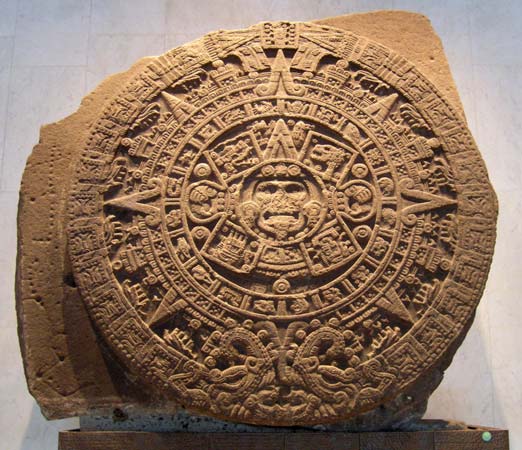
The Stone of the Sun is easily the most important artifact in Mexico. Represented on everything from money to ashtrays, it is an omnipresent Mexican icon. The following text accompanies the display of the stone:
"The one sculpture which identifies the Mexicans above all others is the Stone of the Sun, discovered in December, 1790, in the Plaza Mayor of the capital of New Spain. Because of its symbolic content, with the names of the days and the cosmogonic suns, it was incorrectly identified as the Aztec Calendar.
"This is a large gladiatorial sacrificial altar, known as a temalacatl, which was not finished because of a deep crack that runs from one side to the center of the piece at the rear. Despite the fracture, it must have been used to stage the fights between warriors in the tlacaxipehualiztli ceremony.
"In the design of the disk, the face of Xiuhtecuhtli - emerging from the earth hole, holding a pair of human hearts and showing his tongue transformed in a sacrificial knife - can be recognized; he is surrounded by the four suns that preceded the Fifth Sun, in turn inscribed in the sequence of the 20 day signs, framed in the figure of the Sun with its four beams symmetrically accompanied by sacrificial sharp points. The star is surrounded by two Xiuhcoatl or 'Fire Serpents' which carry it across the heavens."
This page is from the Gymnosperm Database
URL: https://www.conifers.org/topics/mex/050220-18.htm
Edited by Christopher J. Earle
Last modified on 2017.11.08